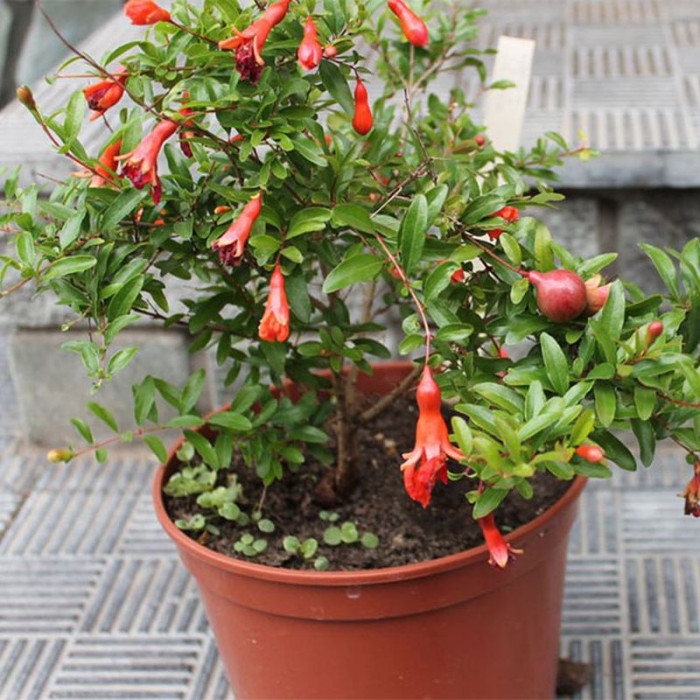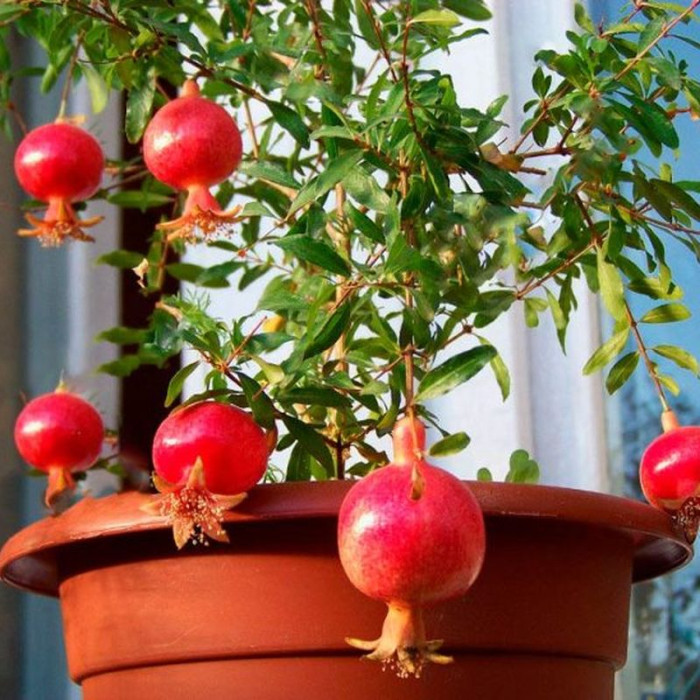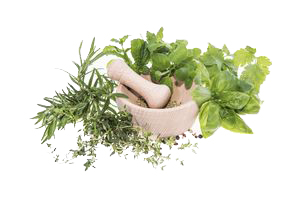Pomegranate / Punica granatum - is a genus of evergreen trees or deciduous shrubs of the Pomegranate family growing in subtropical countries. The height of pomegranate trees is 5-10 meters, the yield is 50-60 kg. Pomegranates are considered medicinal - the fruits contain a lot of sugars, citric acid, vitamin C, tannin. Heat-loving and non-frost-resistant pomegranate trees are beautiful in the garden from spring to winter; until January, bright round fruit-lanterns are kept on their branches.
Thanks to green shiny leaves and beautiful flowers on strongly branched shoots, pomegranate has been used in ornamental gardening since ancient times; he decorated the famous gardens of Babylon in Babylon. In ancient times, the pomegranate was called the 'Carthaginian apple'. Pomegranate begins to bloom in summer, so its scarlet flowers in the East symbolize the onset of the hot summer season.
Pomegranates are very decorative and at the time of fruiting, decorated with pomegranates with a leathery yellow, red or purple pericarp. Pomegranate tolerates shearing well and is also valued for its undemanding to soil, resistance to wind, endurance in adverse conditions.
Pomegranates are also suitable for pot culture, they are formed in the form of a standard tree or bush with 3-5 stems; this woody plant has very flexible shoots at a young age, allowing you to create any form of crown and trunk, which is ideal for bonsai. A beautifully shaped pomegranate in a suitable container is a real eye-catcher in a winter garden.
Rather large funnel-shaped flowers in pomegranate are apical or axillary, solitary or collected in several pieces; they may differ in the length of the pistil. Fruits are formed from ovaries of long pistils, and flowers with short pistils are sterile. Excessive watering of the tree during the period of fruit ripening can lead to cracking.
The pomegranate is photophilous, it grows well on the south, southwest and west window. With good lighting, abundant watering and fertilizer during the active growing season, the pomegranate blooms all summer. From spring to autumn, pomegranates can be exposed to fresh air, shading in the midday hours from the hot sun. Since August, watering the pomegranate is reduced and top dressing is stopped so that the shoots ripen. Before a dormant period lasting 3-4 months, pomegranate leaves fall off. In winter, a pomegranate tree is kept at a low temperature (for example, in a non-freezing basement) and sparse watering.
In the spring, dry branches are removed from the pomegranate, and young shoots are trimmed (leaving 2-3 pairs of leaves) to stimulate branching during crown formation. In order for the pomegranate to bloom, young shoots are cut not in spring, but after flowering. During the summer, extra coppice shoots are systematically removed, often appearing at the base and in the lower part of the stems. As they age (once every 5 years), the pomegranate is rejuvenated, periodically removing one of the old trunks and leaving a strong young shoot instead.
A pomegranate tree grows better in a small container filled with a nutrient substrate (turf, humus, leaf soil, sand (1:0.5:1:1)). Pomegranate transplantation is carried out in the spring with swelling of the kidneys; young seedlings are transplanted annually, adult plants - every 2-3 years, and old ones - once every 4-5 years.
Pomegranate is propagated by cuttings, layering, root offspring, seeds and grafting. Cuttings are cut from mature shoots of a tree in February-March, and in summer - from semi-lignified shoots (they take root more slowly than in spring). Large, well-developed pomegranate specimens grown from cuttings can bloom as early as 2-3 years after planting. When propagated by root offspring, pomegranate also quickly begins to bear fruit, but gives a large amount of root shoots.
With seed propagation, sowing is done in spring or autumn. When propagated by seeds, strong seedlings grow. The first 2-3 years, pomegranate seedlings grow without formation. The first fruits appear on the tree after 4-5 years, and it enters into stable fruiting after 7-8 years.

No questions about this product, be the first and ask your question.








